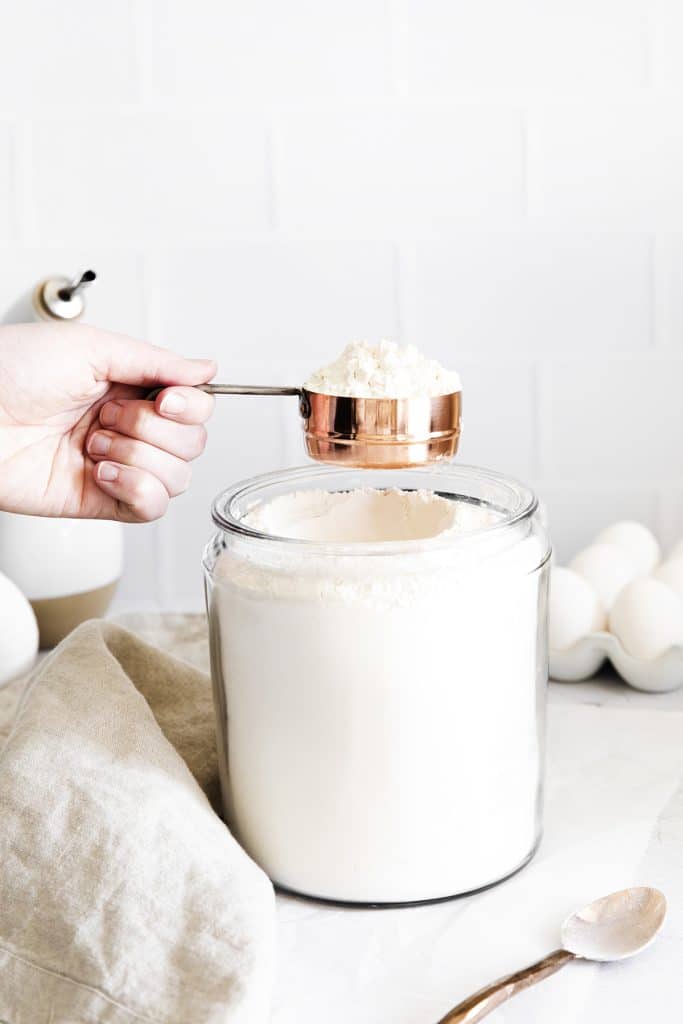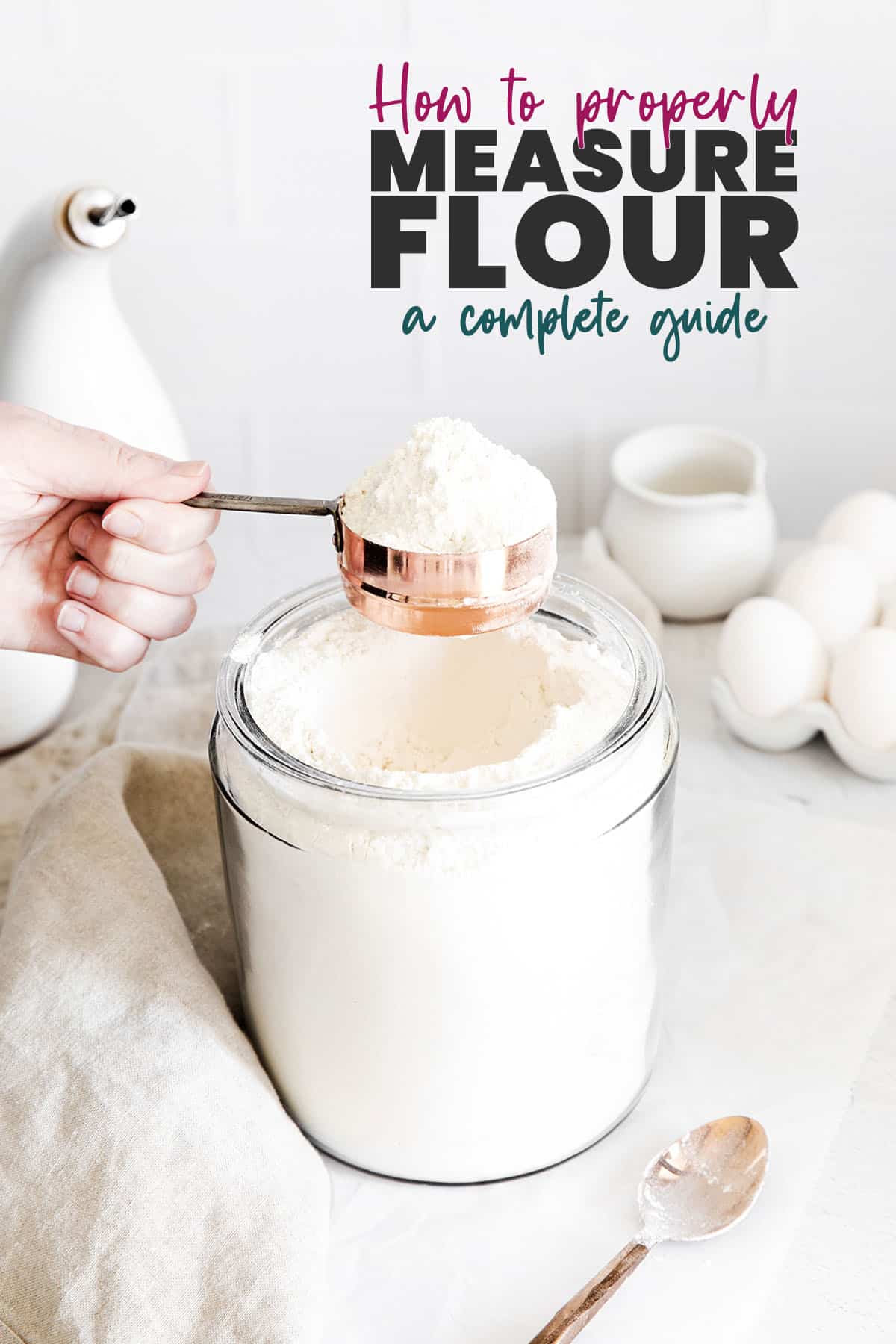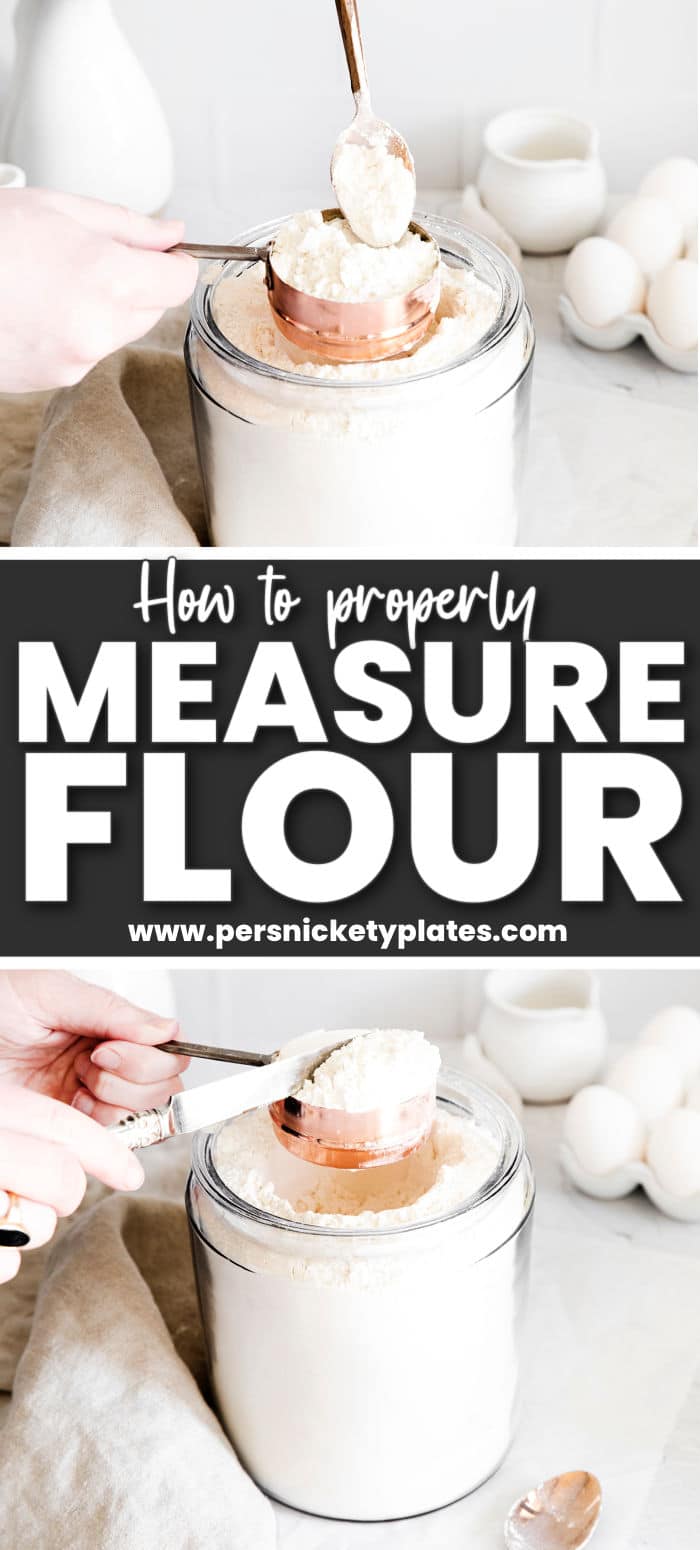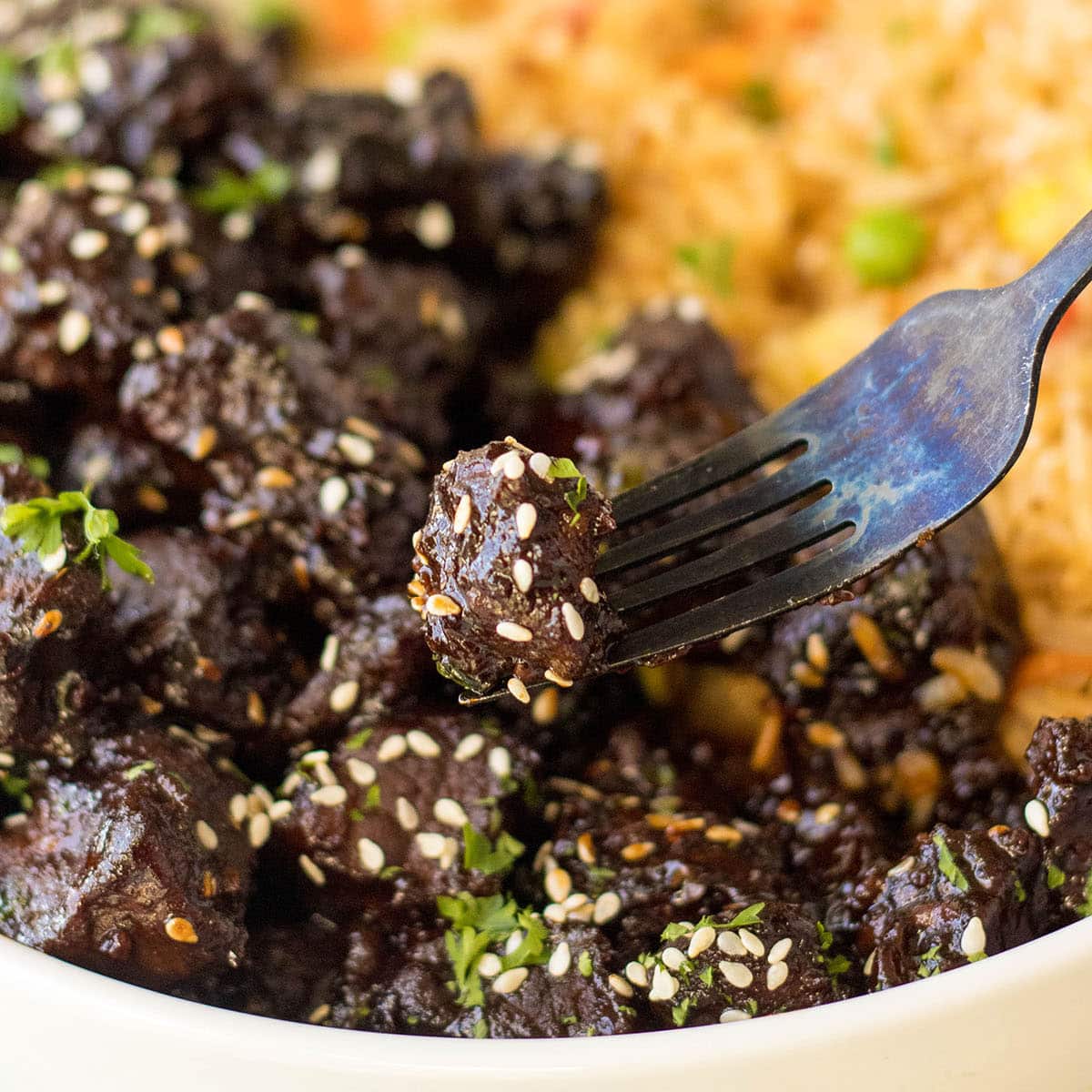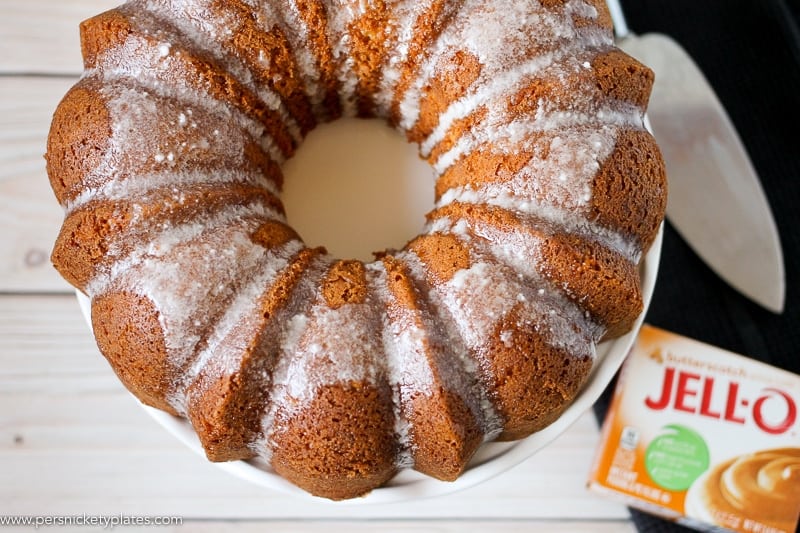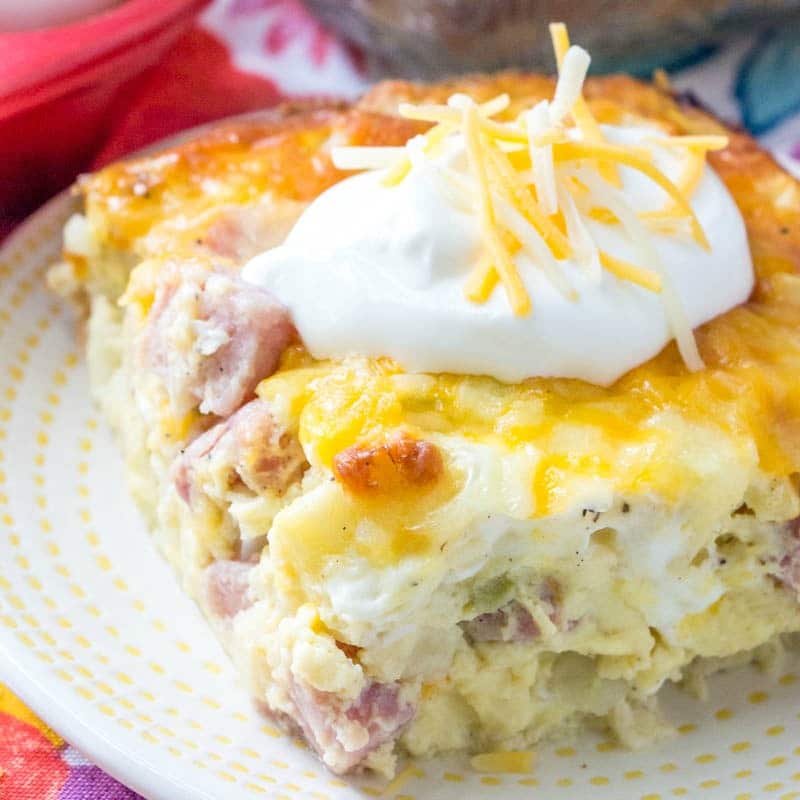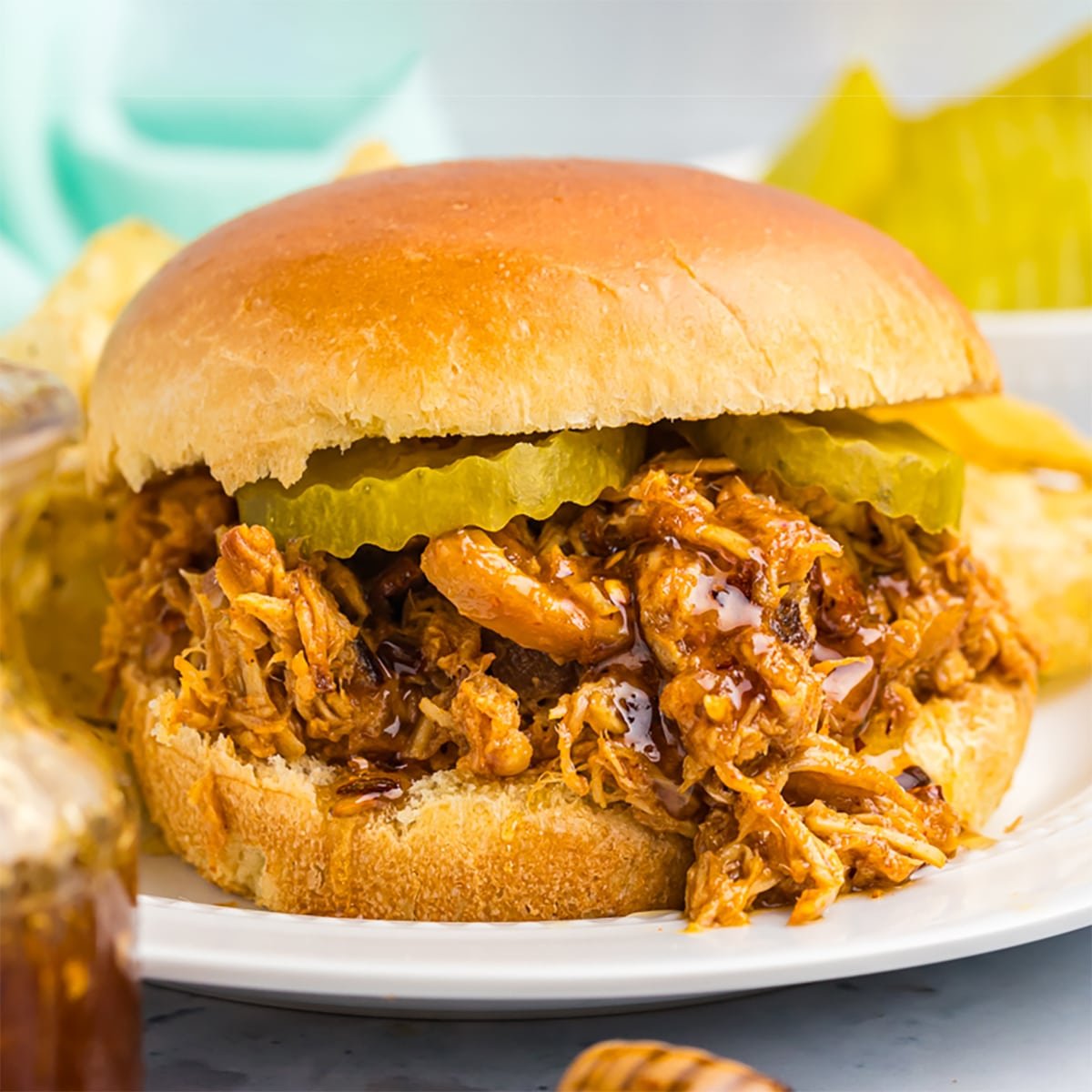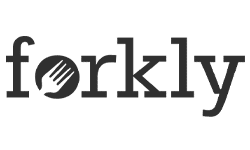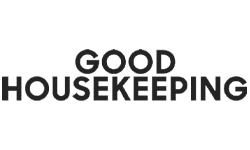This post may contain affiliate links meaning if you buy from them, I will make a few pennies, at no cost to you. See disclosure here.
Learn how to measure flour properly and avoid common mistakes often made by so many of us! Build your confidence in the kitchen, and never again worry about serving less-than-spectacular desserts to all your friends and loved ones!
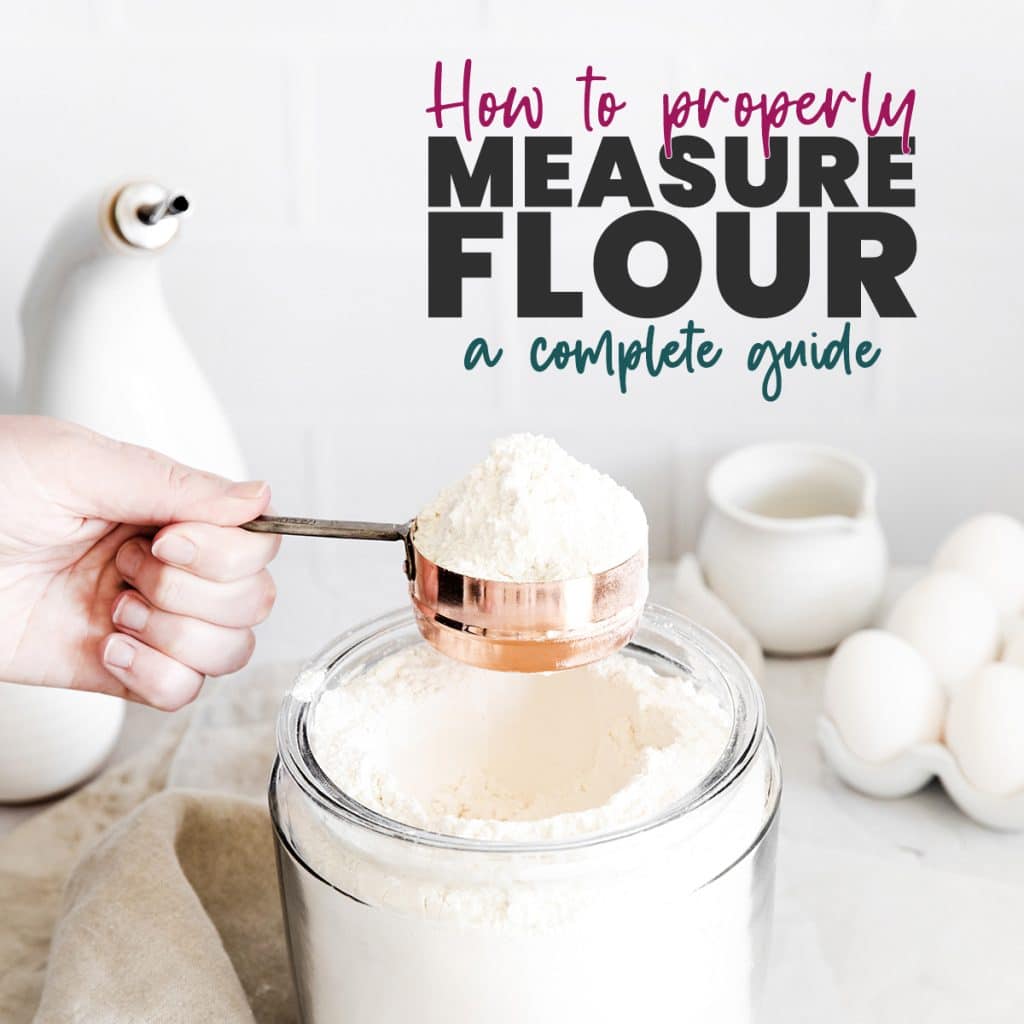
How to properly measure flour
I know at one point or another we’ve all found a fantastic recipe we look forward to making like these chocolate dipped butter cookies, or maybe a Christmas bundt cake.
We pick up the ingredients, we announce to everyone that they’re in for a surprise dessert after dinner, and then blah…the dessert is dry, looks off, and it doesn’t taste the way it’s meant to.
Yet, we have no idea what went wrong! We’ve all been there.
Unlike with cooking, we can’t adjust ingredients once the raspberry cream cheese coffee cake comes out of the oven.
We can’t add a little extra milk or cream, or maybe some oil to fix the consistency, and we definitely can’t adjust the amount of flour we’ve already used!
That’s the thing. Baking is precise, it has little room for flexibility because it really is a science.
More often than not, it’s the amount of flour used in baked goods that will make or break the results. And more often than not, too much gets added!
I’m going to show you foolproof ways to avoid potential mistakes so that the next time you’re excited about baking homemade cosmic brownies or better than box mix brownies, you’ll have a flawless dessert to serve your crowd!
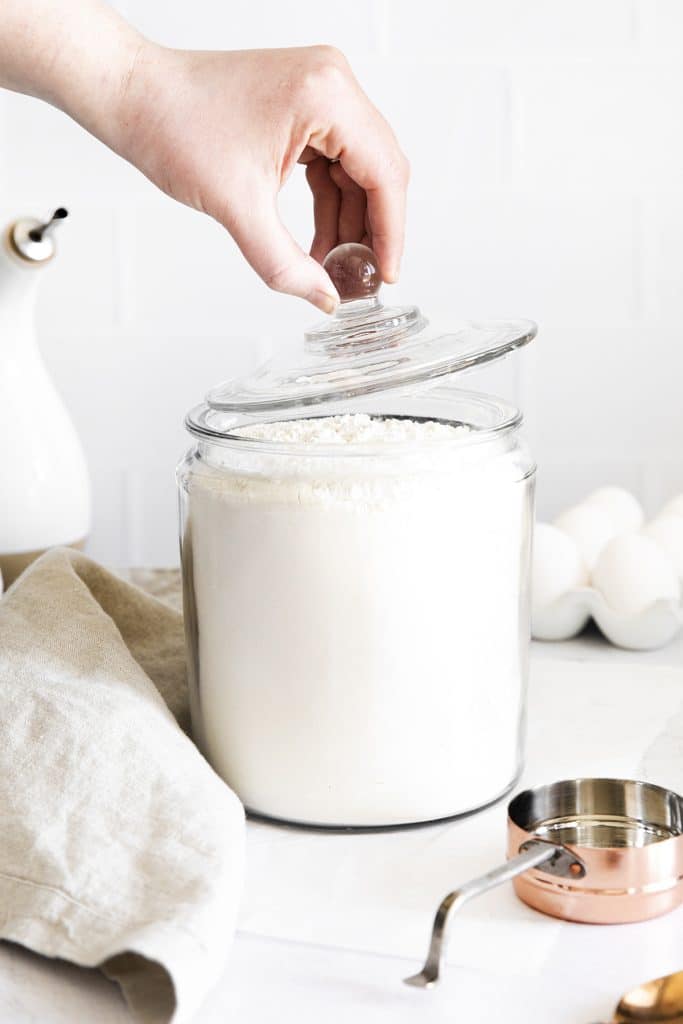
Equipment You’ll Need
Mistakes to Avoid When Measuring Flour
It’s pretty easy to use the measuring cup to scoop out the flour straight from the bag or container. So, I get why most people measure their flour this way. Then, they scrape off the top and assume they’ve got the amount needed.
Wrong!
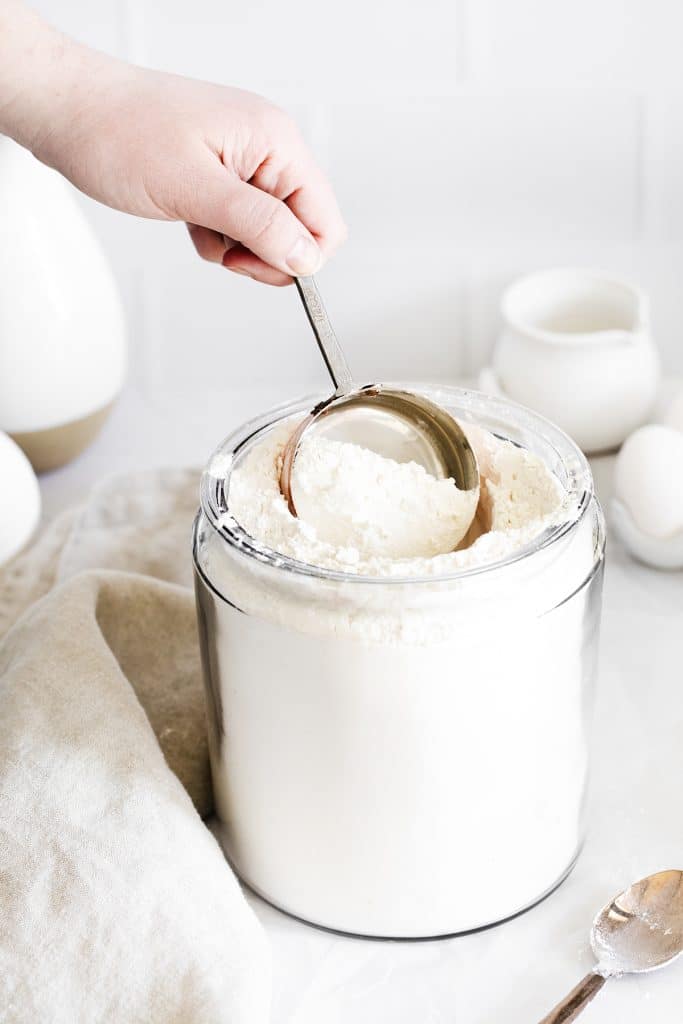
When you scoop out the flour using the measuring cup, you’re packing in about 6 oz of flour. You are therefore using way more flour than you need, leaving no room for air and more room for even more flour. This creates heavier, denser textures in what should be moist, light, and fluffy baked goods.
When you use the spoon and level method, you’re getting a more accurate amount of 4.25 oz of flour because you’re leaving more room for air and less room to pack in the flour.
Just think about it, if your recipe calls for 2 cups of flour, using the direct scooping method will give you 12 oz of flour when you really only need 8.5 oz. That’s 3.5 oz of extra flour, which is over 1/2 a cup. Crazy right?!
How to Measure Flour The Right Way!
There are really only two ways to measure your flour properly. The first is the digital kitchen scale, and the second is the spoon and level method.
Something to note is that when we talk about ounces, we’re referring to weight, not fluid ounces that you use to measure volume.
Using a Scale
I highly recommend you invest in one asap. They are relatively inexpensive and can be used to measure so much more than just flour. It’s a great tool to have.
- Grab your scale and the instrument you’ll be using to measure the flour. Place it on the scale empty. I like to use a bowl, that way I don’t need to dirty anything else up. Once I’ve measured my flour, I can continue with the recipe using the same bowl.
- Now, set the scale to zero. Some scales will have a “tare” button that will zero the scale for you. If not, just press the on/off button. It should now have a negative number. This removes the weight of the bowl, therefore it will only account for the weight of the flour once added.
- Fluff up the flour in the container or bag and start scooping the flour into the bowl until the scale reads the amount needed.
What’s great about digital scales is that they usually come with an option to switch to whatever unit of measurement you’re using.
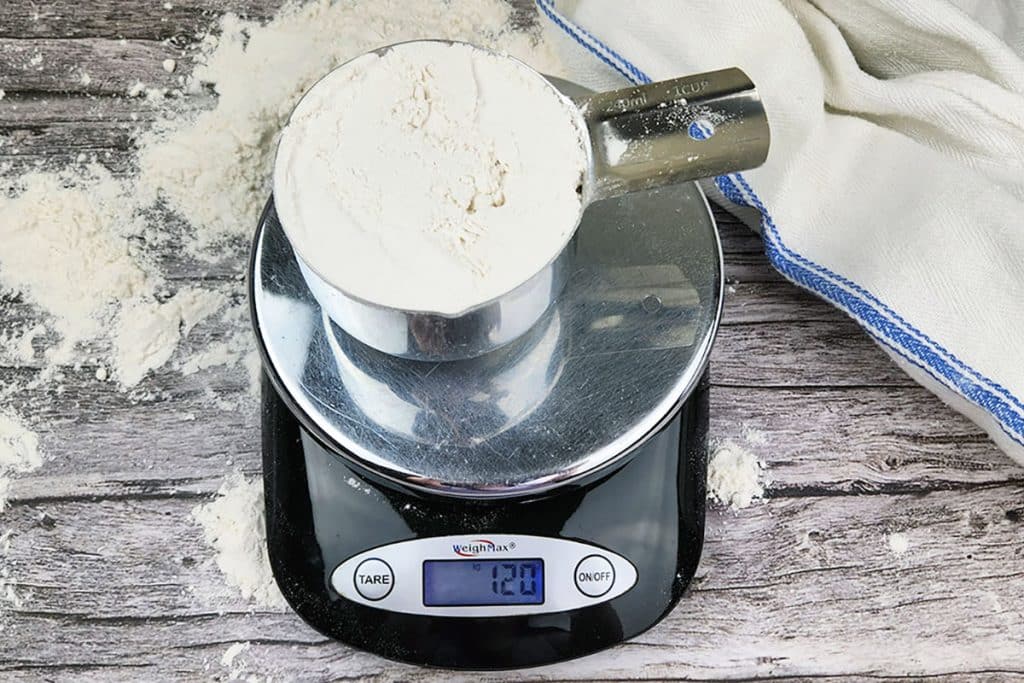
Can I Accurately Measure Flour Without a Scale?
Absolutely. Or at least as close to it as possible without one!
Spoon and level
- Grab a spoon, your measuring cup, and the flour.
- Fluff up the flour inside the container so that it’s not packed down.
- Place the measuring cup on a flat surface and use the spoon to gently scoop out the flour into the measuring cup, one spoonful at a time.
- Once the cup is full and overflowing, use the flat side of a knife to scrape off the excess so that the flour is level with the brim of the cup.
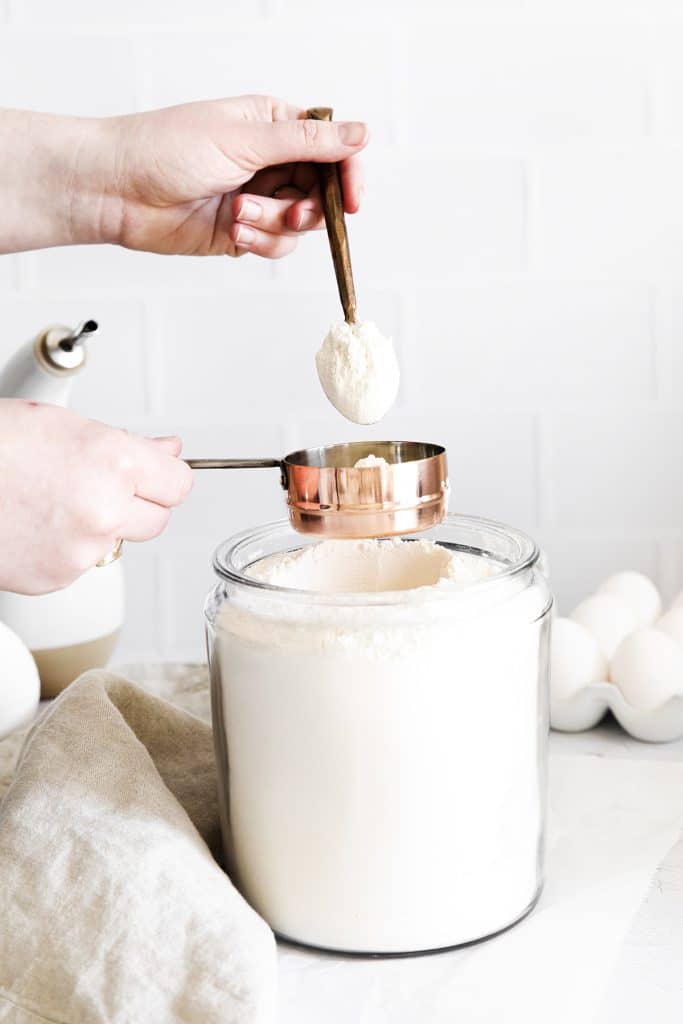
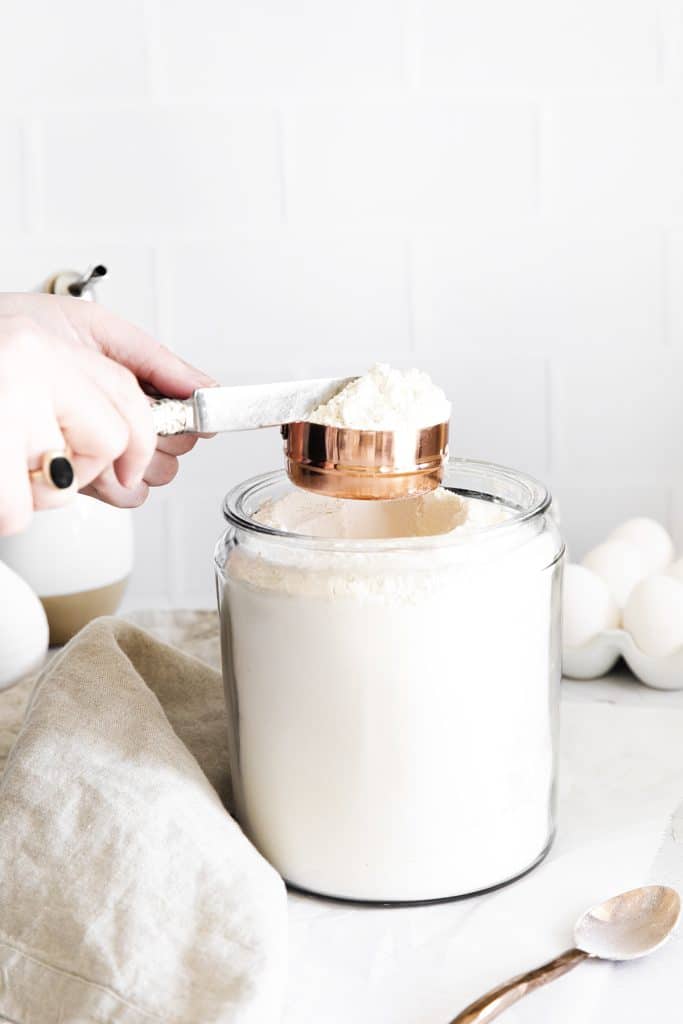
Are all Measuring Cups Created Equal?
No, they’re not.
Many people spend years cooking and baking using they set of measuring cups before they realize that there are actually 2 different types.
There is a set for dry ingredients and a different set for wet ingredients. You may notice that there is a little spout on the side of some measuring cups. That’s for pouring the liquids out.
It’s important to be able to level off the dry ingredients without the spout for the right amount.
If you’re someone who loves to cook and bake, I highly recommend you invest in the two different types for the most accurate measurements.
Are Different Types of Flours Measured the Same Way?
Bread flour and all-purpose flour are very similar and weigh the same. So 1 cup of either is still equal to 4.25 oz. Cake flour, which is much lighter will equal just 4 oz. for every 1 cup.
So there you have it! Tips, tricks, and foolproof ways to learn how to measure flour and level up your baking game just like the pros!
Check out my post for more than 8 common kitchen conversion measurements. For everything from baking and cooking to measuring liquid and dry ingredients, and the best tools to use.
